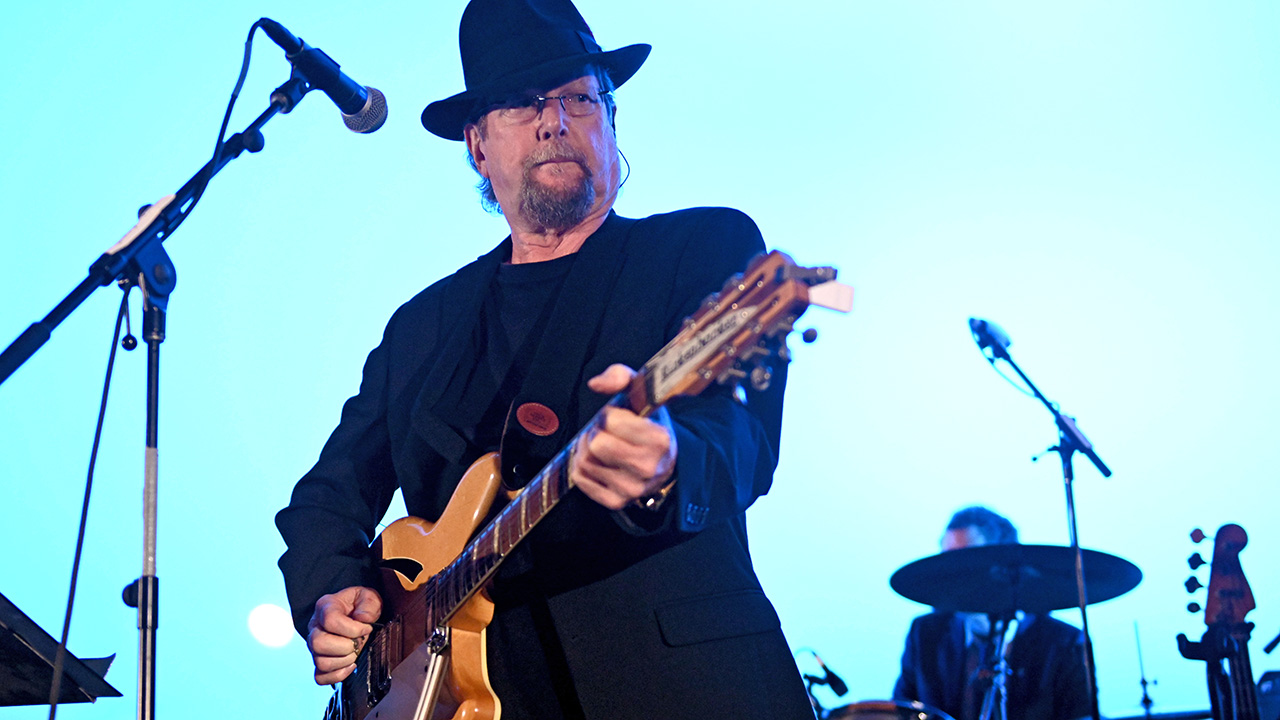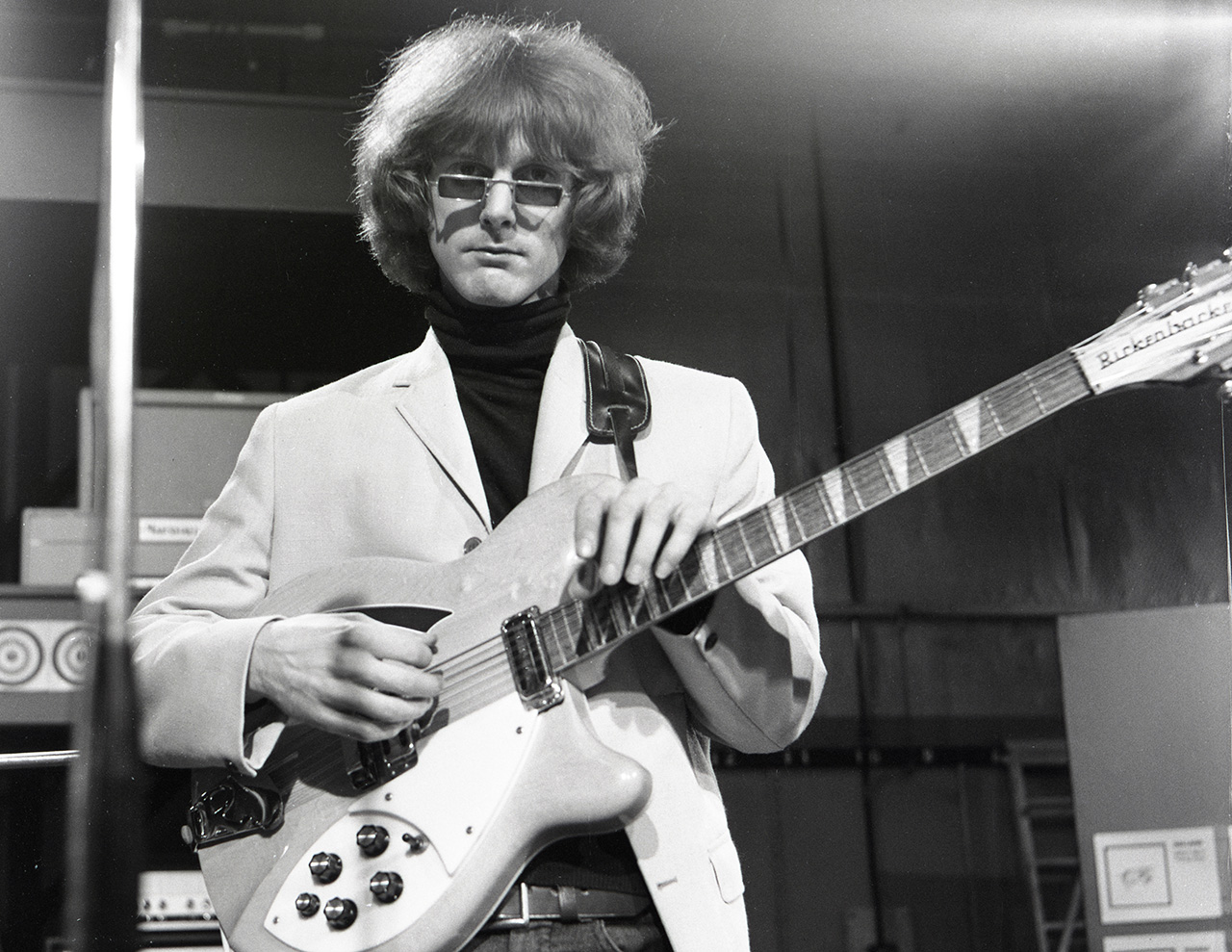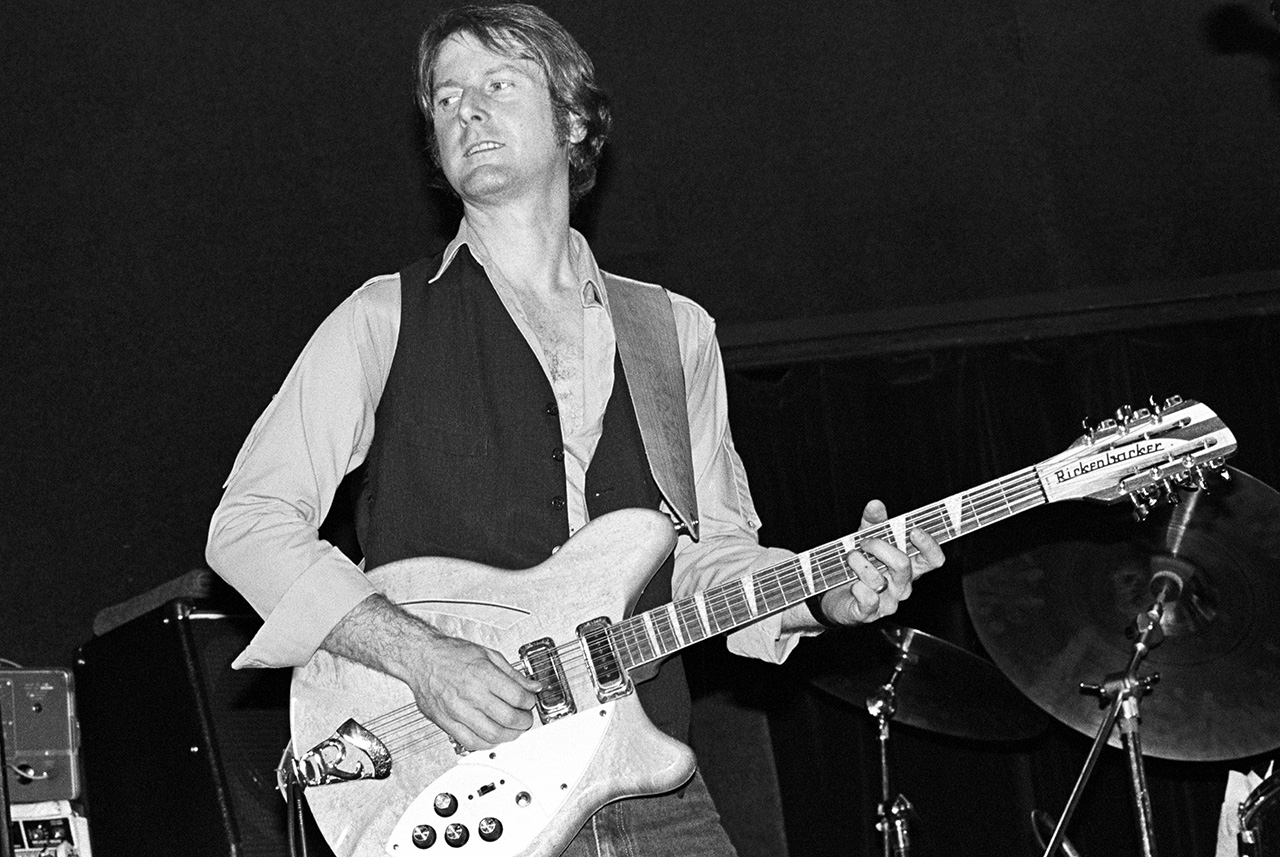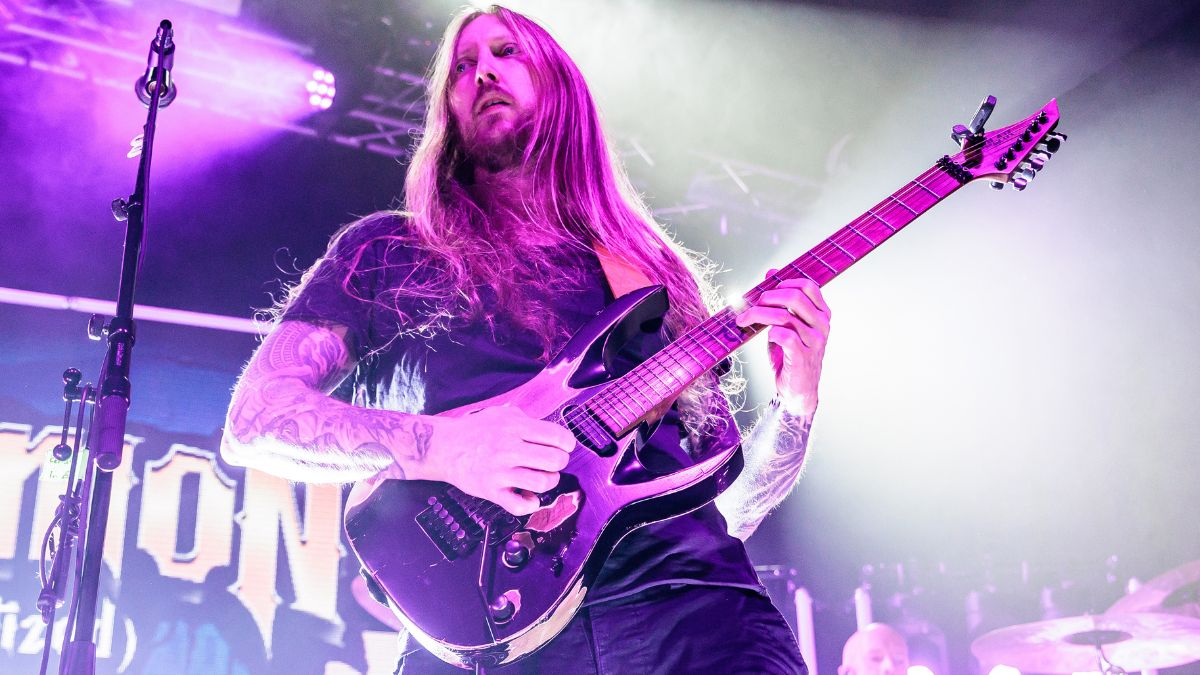“I don’t think LSD had a real big impact on the songwriting or guitar playing… it was just that we saw brighter colors and got high!” Roger McGuinn on The Byrds’ influential guitar style, and why they didn’t follow The Kinks and The Who into distortion
The banjo-inspired Rickenbacker guitar icon recalls how Miles Davis got them signed and weighs up the merits of David Crosby and Clarence White

“I don’t think of myself as a guitar hero,” Roger McGuinn tells Guitar World modestly. “I just like to play.” In fact, he suggests a little light-heartedly, his Rickenbacker-bred 12-string sound comes from a different instrument.
“I’m a banjo player,” he laughs. “I do fingerpicking on the banjo, like the three-fingered style. I definitely apply that to my electric and acoustic guitar playing.”
He didn’t work alone on Byrds albums like Mr. Tambourine Man (1965), The Notorious Byrd Brothers (1968), and Sweetheart of the Rodeo (1968). Initially he had help from David Crosby, and later the Tele-toting Clarence White.
“David played up and down strumming rhythm,” McGuinn remembers. “He was a great, great rhythm player. But Clarence played amazing, innovative, improvised leads. You never knew what he was going to come up with. He was improvising all the time – it was like having a loaded machine gun.”
The trio’s guitar chops influenced everything from folk to psych to country –something the 83-year-old could never have imagined. “I didn’t set out to do anything like that. I just wanted to play music. I’m really, really happy about how it all worked out. I’ve had a really good ride.”
We often hear about your 12-string guitar sound when it comes to The Byrds, but David Crosby was a big part of that sound too.
“David was great at harmony; he was into jazz and listened to a lot of intricate harmonies. Instead of singing a straight third, fourth or fifth harmony, he’d interplay them – he’d do a third here, a fourth there, a fifth there, and kind of mix them up. It made the music really interesting.”
All the latest guitar news, interviews, lessons, reviews, deals and more, direct to your inbox!
How would you describe his approaches to guitar compared to your own?
“I came out of the old school of folk music. They taught me how to fingerpick like Merle Haggard, and the stuff that Chet Atkins did with his thumb, and two fingerpicks. I did a lot of Earl Scruggs-style playing on five-string banjo.
“So I was more of an arpeggio player, as opposed to strumming up and down like David did. He did it really, really fast and really good.”

Since David was into jazz, are there more jazz elements in The Byrds’ music than people realize?
“Yeah! We actually recorded a version of Miles Davis’ Milestones once. We did it in a studio, but it never came out. You can probably find it on YouTube or something.”
Were The Byrds friendly with Miles?
“Yeah – he got us signed to Columbia Records. Benny Shapiro was Miles’ agent. We played an audition for Benny at his house. His 14-year-old daughter was upstairs and came running down, all excited. She said, ‘Daddy, who’s that?’ She thought The Beatles were in her living room!
“The next day, Benny told Miles about this story about these kids who’d came over and his daughter has freaked out. Miles called up Goddard Lieberson of Columbia and said, ‘You know that rock band you've been looking for? I think I got them for you.’ And Columbia, after hearing an audition tape, signed us on his recommendation.”
Miles Davis was no stranger to electric guitar players by the late ’60s, like John McLaughlin. Did he ever ask you or David to be on his records?
“No, that didn’t come up. But there’s a funny story where Miles recorded one of David Crosby’s songs. They were in New York, and Miles invited David to listen to a recording he’d made of Guinevere. And said, ‘Well, you can release it – just don't call it Guinevere or give me any credit!’”
Would you say The Byrds influenced Miles at all?
“I would imagine. He had his ears open to everything that was going on. But I wouldn’t say folk-rock was a big influence on him; he was already doing his own thing.”
You focused on clean, chiming tones when British bands like The Kinks and The Who leaned on distortion. Were you ever tempted to do the same?
“I think we used some feedback; but no, we didn’t want to do a lot of fuzz. We didn’t do a lot of phase shifting either. We just liked a clean sound.”
The recordings first couple of albums were the best; and the onstage Byrds were the best with Clarence
As The Byrds got into psychedelia and LSD, did it alter how you approached writing and playing?
“We’d all done LSD and smoked pot, you know – we were kind of there! I don’t think it had a real big impact on the songwriting or guitar playing… it was just that we saw brighter colors and got high!
“We didn’t really write drug songs on purpose. People called Eight Miles High a drug song, but it was really jazz. We were inspired by John Coltrane and Ravi Shankar; it was an amalgam of Indian music and modern jazz.”

Can you remember writing Eight Miles High?
“Gene Clark had the chords when we flew to England and did a tour over there, where we met The Beatles and The Stones. We had a great time hanging out with them, and flying back, we decided to write a song about the tour.
“Gene said, ‘How high do you think this plane is?’ I said, ‘Probably about 39,000 feet, maybe seven miles high.’ But The Beatles had a hit with Eight Days a Week, and Gene thought eight was a cooler number than seven.
“So I said, ‘We can change it to Eight Miles High’ – you know, poetic license. But later some radio stations did the math and said, ‘Airliners don’t fly eight miles high. They must be talking about some other kind of high!’”
The Byrds shifted more toward country rock when Clarence White joining the replaced David Crosby. Which era do you feel closer to?
“I love them both for different reasons. The recordings we did for the first couple of albums were the best; and then, the live onstage Byrds were the best with Clarence and those guys.”
Do you feel there’s one quintessential Byrds album?
“I like The Notorious Byrd Brothers. I think that it’s got a lot of good innovation on it, and some pretty songs. And Gary Usher was a good producer.
“We were all kind of listening to The Beatles so we included some sound effects and things like that. And I think by that point I did have a phase shifter, but I wasn’t using any different guitars or amps at that point.”
Andrew Daly is an iced-coffee-addicted, oddball Telecaster-playing, alfredo pasta-loving journalist from Long Island, NY, who, in addition to being a contributing writer for Guitar World, scribes for Bass Player, Guitar Player, Guitarist, and MusicRadar. Andrew has interviewed favorites like Ace Frehley, Johnny Marr, Vito Bratta, Bruce Kulick, Joe Perry, Brad Whitford, Tom Morello, Rich Robinson, and Paul Stanley, while his all-time favorite (rhythm player), Keith Richards, continues to elude him.
You must confirm your public display name before commenting
Please logout and then login again, you will then be prompted to enter your display name.


